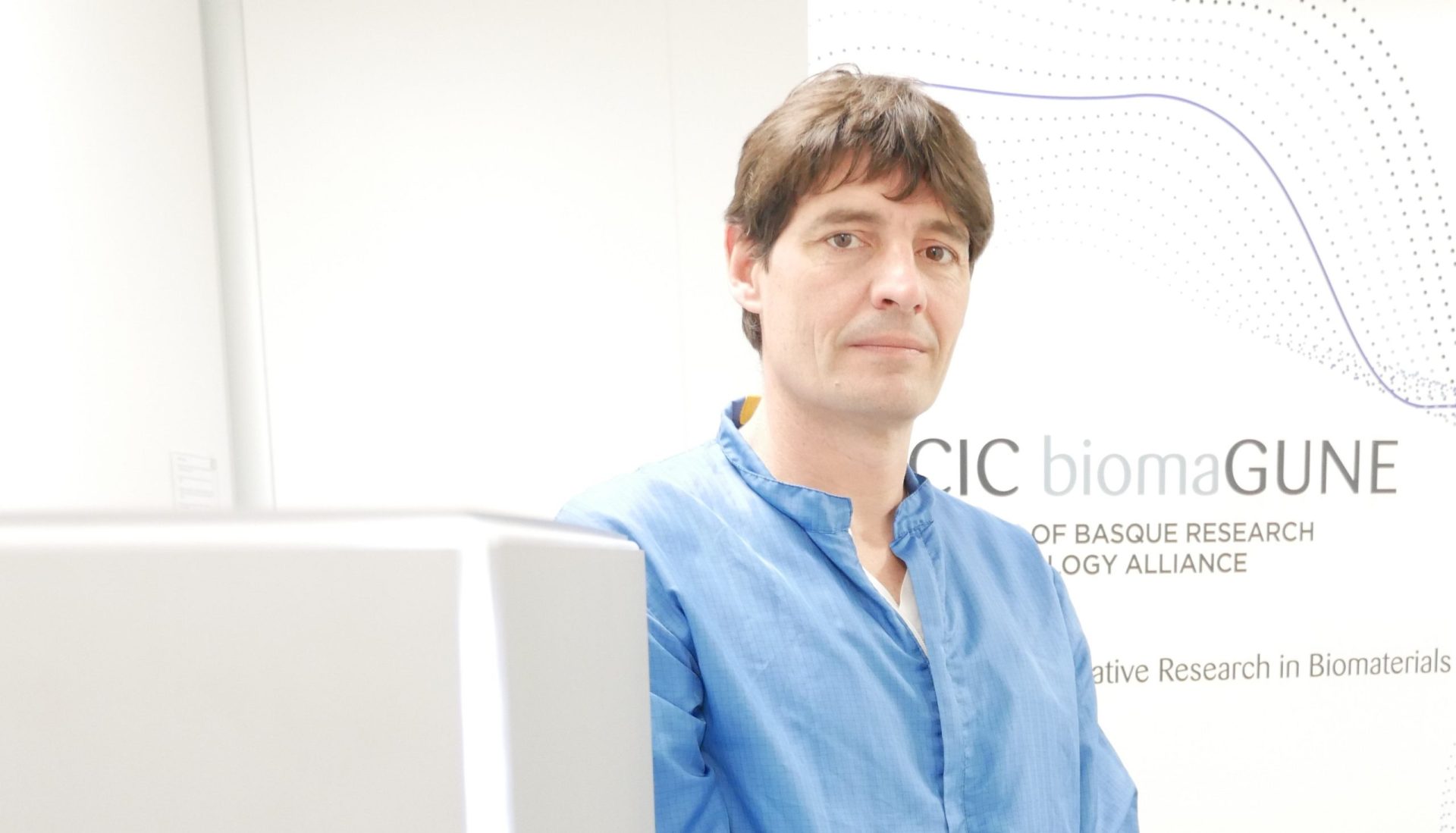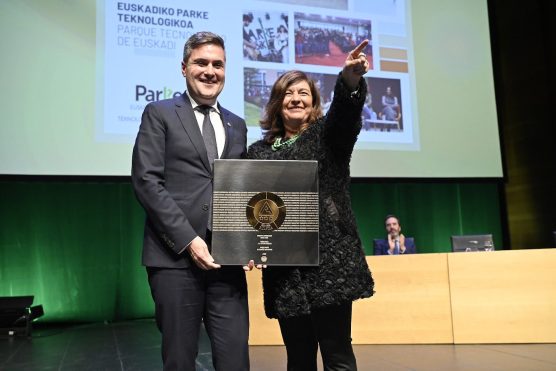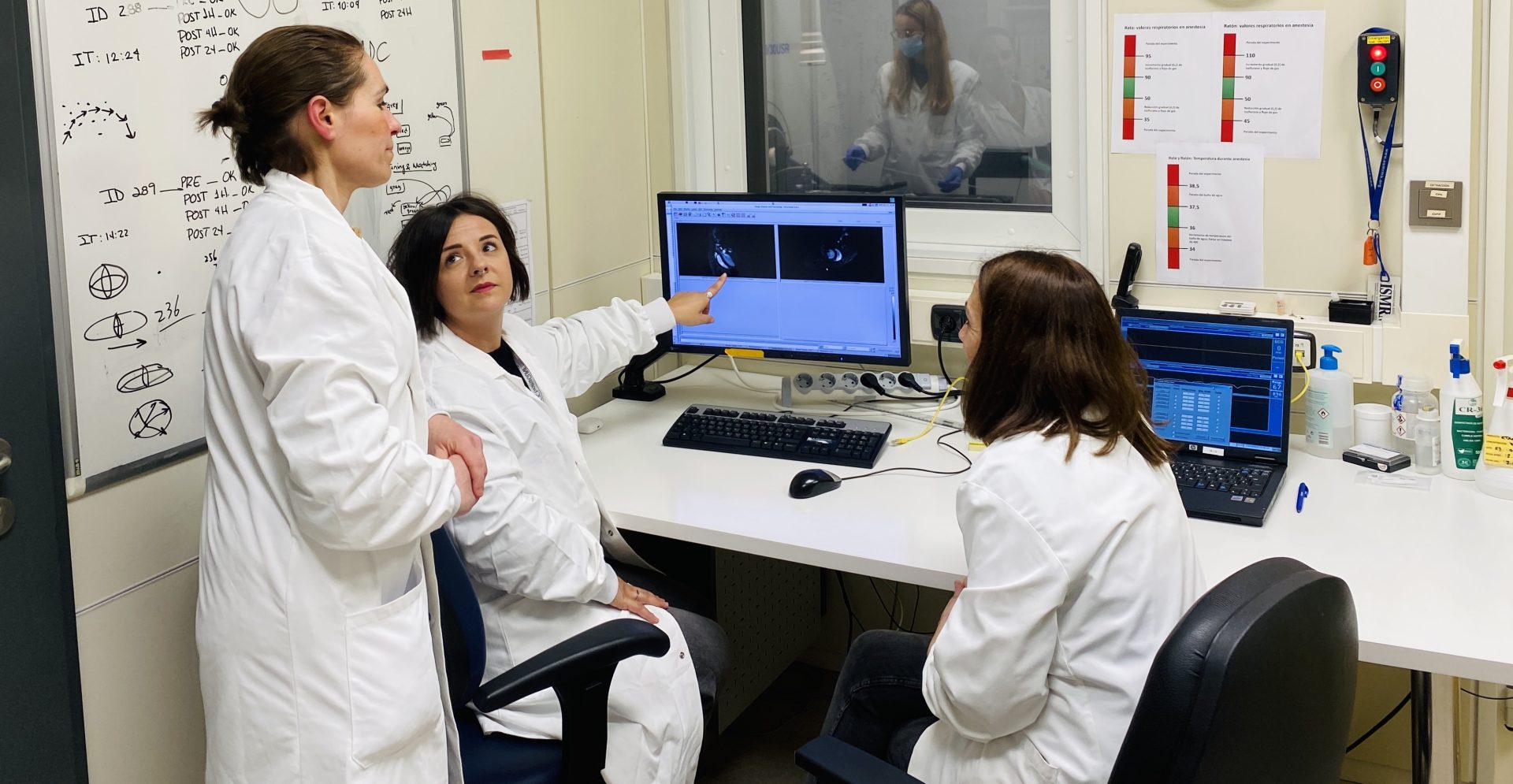Jordi Llop President of the European Society for Molecular Imaging (ESMI)

ESMI’s main mission is to create an international collaborative community for the development of new ideas for imaging biological processes.
Jordi Llop highlights CIC biomaGUNE’s Molecular Imaging Platform, one of the most advanced preclinical imaging research infrastructures in Europe.
Dr Jordi Llop, principal investigator of the Radiochemistry and Nuclear Imaging Laboratory at CIC biomaGUNE, has been appointed president of the European Society for Molecular Imaging (ESMI). ESMI, which is celebrating its 20th anniversary, currently has more than 1,400 associated professionals in the field of molecular imaging, working in Europe, America and Asia. The society represents the scientific community working in different disciplines of molecular imaging ‘in order to see what is happening at the molecular or functional level within a living organism in both normal and pathological conditions, generally in a non-invasive way,’ explains Llop, an expert in the development of new imaging agents.
Molecular imaging is a very broad field, which includes basic, preclinical, translational and clinical research. ‘It is used to find out what is happening at the molecular level within an organism, and its applications include, for example, the diagnosis of diseases, the investigation of pathophysiological phenomena associated with them, or the evaluation of the response to a treatment. Molecular imaging finds application in a wide range of diseases, such as cancer, neurodegenerative, respiratory, cardiovascular, infectious and musculoskeletal diseases. The main function of ESMI is the integration of all imaging modalities and related disciplines to stimulate interdisciplinary alliances, with the ultimate goal of transferring the knowledge acquired in experimental imaging studies to the clinical setting.
According to Llop, ‘today’s scientific community is dealing with increasingly complex problems. The biomedical environment requires the collaboration of experts with very different expertise to carry out ambitious projects. Collaboration is essential, and ESMI is working to provide this community with tools for information exchange and to foster collaboration. In this sense, the society is organising the 20th European Molecular Imaging Congress to be held in March 2025 in Bilbao.
Llop believes that the presidency of the ESMI can help ‘to place both our research group and CIC biomaGUNE and the Basque Country on the map of molecular imaging in Europe and the world’. He also wants to highlight the Molecular and Functional Imaging Platform of CIC biomaGUNE, recognised by the Ministry of Science, Innovation and Universities as a Singular Scientific and Technological Infrastructure (ICTS) in biomedical imaging, which ‘is one of the largest preclinical imaging research infrastructures in Europe. The same facility houses all the imaging techniques, a cyclotron and a radiochemistry laboratory where all kinds of contrast agents and tracers can be used for in situ research. This gives us the possibility to undertake studies with great flexibility and rapid response capacity’. As an example of the work being carried out, Llop highlights some of the projects that the laboratory he directs is working on, which clearly show the possibilities offered by molecular imaging.
Nanorobots to fight cancer
In one of the projects, financed by the ‘La Caixa’ Foundation, they are studying ‘how nanorobots, or small nanoparticles with the capacity to move by themselves in certain environments, are capable of accumulating in a bladder tumour. Using molecular imaging techniques, we have shown that they can accumulate in the tumour, and that when loaded with a specific drug, tumours are reduced by up to 90% in mice,’ he explains. They are also working on the study of brain tumours from breast cancer metastases: ‘We are trying to see if the drugs administered accumulate in the metastasis and can serve as a therapy.
Markers to study lung ventilation
The team has also developed a lung ventilation marker. It is ‘a radioactively labelled gas that serves as a contrast; so that, when inhaled, the gas is distributed in the lung, you can see where it reaches and you can tell if the lung is well ventilated or which regions of the lung are not well ventilated,’ explains Llop. This marker is in the preclinical phase, and the researcher is optimistic: ‘We are optimising production so that it can be compatible with good manufacturing practices and safe from the point of administration to the patient,’ he adds.
Evaluation of Alzheimer’s treatments
Another project, funded by the Spanish Research Agency, is related to Alzheimer’s disease. They use molecular imaging to look at certain processes that occur during the development of Alzheimer’s disease. ‘We evaluate different therapies in animal models, based on the stabilisation of a certain protein, which could then be applied in humans to control or stop the progression of the disease.




